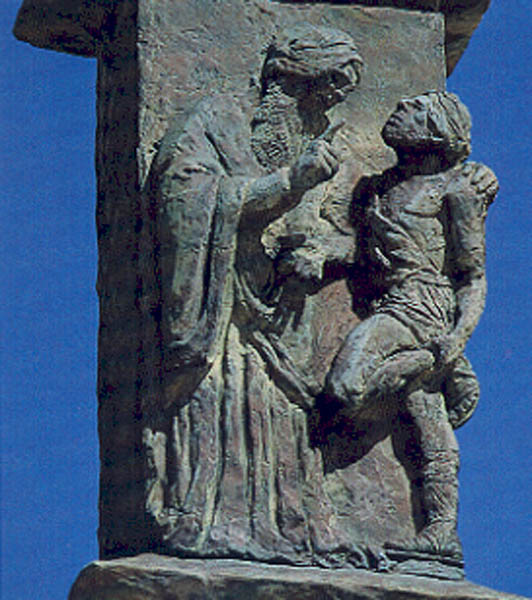Image Details

Richard Nowitz
Hillel, the greatest of the sages of the Second Temple period. This relief sculpture is part of a monumental sculpted menorah, the work of contemporary artist Benno Elkan, outside the Israeli Parliament, or Knesset, building. The relief pictures Hillel’s response to a non-Jew who said he wanted to convert to Judaism. But the man made his request for conversion conditional—Hillel had to teach him the entire Torah while the non-Jew stood on one foot. Hillel’s response: “What is hateful to you, do not unto your neighbor; this is the entire Torah, all the rest is commentary, go and study it. “The rabbis emphasized the last remark; obedience to the so-called negative golden rule was not enough and was not the whole of Hillel’s advice. After that, you had to study. Hillel is also famous for the admonition, contained in Pirkei Avot I:14: “If I am not for myself, who will be for me? If I am only for myself, what am I? If not now, when?”
In the strife-filled times from the second century B.C. into the first century A.D., disputes between religious sects of Sadducees, Pharisees, Essenes and many splinter groups fueled uncontrolled development of the biblical text. An urgent need for standardization of the biblical text arose. The author suggests that in the early first century, Hillel and the scholars under his tutelage undertook this great task, selecting and rejecting manuscript traditions, ultimately fixing and canonizing the text that has come down to us today as the Hebrew Bible.
